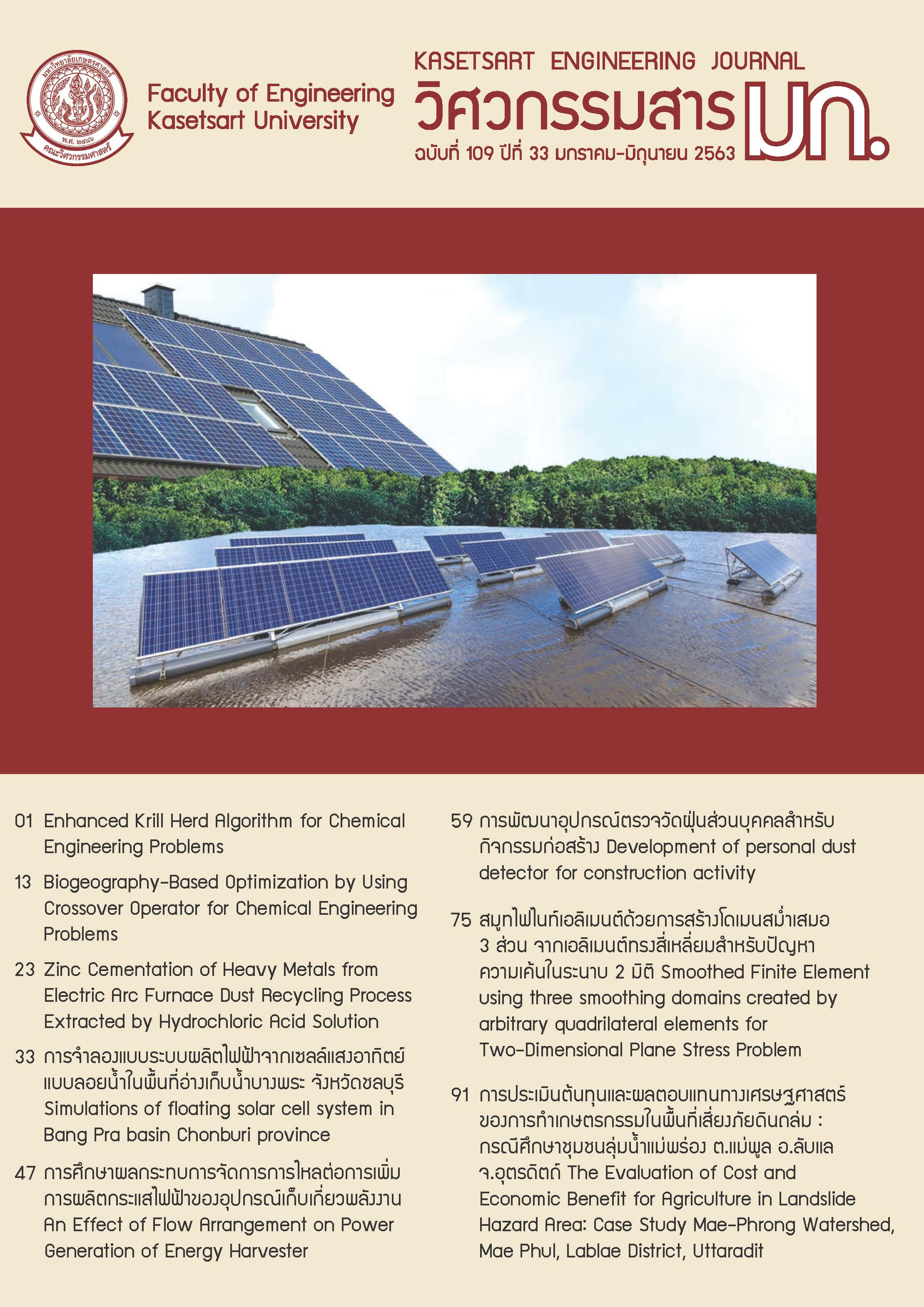Simulations of floating solar cell system in Bang Pra basin Chonburi province
Keywords:
floating solar cell system, energy injected to grid, PVSyst, Eastern Economic Corridor (EEC)Abstract
Solar energy is renewable energy which is clean and non-polluting. The average solar radiation in Thailand is very high and has a great potential for electrical power production. Presently, solar energy production is increasing, especially in Eastern Thailand which is very important industrialized area for Eastern Economic Corridor and faces rising energy demand. This study simulates solar energy power system and selects Bang Pra basin in Chonburi province to be studied area for installing floating solar PV system. The installed capacity of all simulated case studies was 1 MW with determined by inverter rating. The simulations were done using PVSyst, then were analyzed and compared the results in terms of engineering aspect, energy injected to grid, and economic viewpoint for investment consideration.
References
ดวงกมล อิศรางพร (2560). แนวทางการผลิตพลังงานหมุนเวียนเพื่อความยั่งยืนของชุมชนในจังหวัดสุรินทร์. วิทยานิพนธ์. สถาบันบัณฑิตพัฒนบริหารศาสตร์
สามารถ วงษ์ฤทธิ์ และปฐมาภรณ์ ศรีผดุงธรรม (2555). การวิเคราะห์ความเหมาะสมของพื้นที่สำหรับติดตั้งเซลล์แสงอาทิตย์ในประเทศไทยโดยใช้ฐานข้อมูลสารสนเทศภูมิศาสตร์ร่วมกับแผนที่ความเข้มรังสีดวงอาทิตย์. การประชุมทางวิชาการของมหาวิทยาลัยเกษตรศาสตร์ ครั้งที่ 50: สาขาสถาปัตยกรรมศาสตร์และวิศวกรรมศาสตร์, หน้า 158-165.
สำนักงานนโยบายและแผนพลังงาน (2562). แผนพัฒนากำลังผลิตไฟฟ้าของประเทศไทย พ.ศ. 2561-2580. แผนพัฒนากำลังผลิตไฟฟ้าของประเทศไทย, กระทรงพลังงาน.
สำนักงานคณะกรรมการพัฒนาเศรษฐกิจและสังคมแห่งชาติ (2559). แผนงานพัฒนาเศรษฐกิจภาคตะวันออก (พ.ศ. 2560-2564).
Conibeer G. and Willoughby A. (2014). Solar Cell Materials Developing Technologies. John Wiley & Sons, Ltd.
Jain S. and Vivek Agarwal V. (2007). A Single-Stage Grid Connected Inverter Topology for Solar PV Systems with Maximum Power Point Tracking. IEEE Transactions on Power Electronics, 22(5): 1928-1940.
Luft W. (1976). Radiation Effects on High Efficiency Silicon Solar Cells. IEEE Transactions on Nuclear Science, NS-23(6): 1995-1802.
Yadav N., Gupta M. and Sudhakar K. (2016). Energy Assessment of Floating Photovoltaic System. International Conference on Electrical Power and Energy Systems (ICEPES), Maulana Azad National Institute of Technology, Bhopal, India, pp. 264-269.
Mittal D., Saxena B.K. and Rao K.V.S. (2017). Floating Solar Photovoltaic Systems: An Overview and their Feasibility at Kota in Rajasthan. International Conference on Circuits Power and Computing Technologies (ICCPCT), Baselios Mathew II College of Engineering, Sasthancotta, Kollam district, India.
Kandasamy C. P., Prabu P. and Niruba K. (2013). Solar potential assessment using PVSYST software. International Conference on Green Computing, Communication and Conservation of Energy (ICGCE), Chennai, pp. 667-672.


